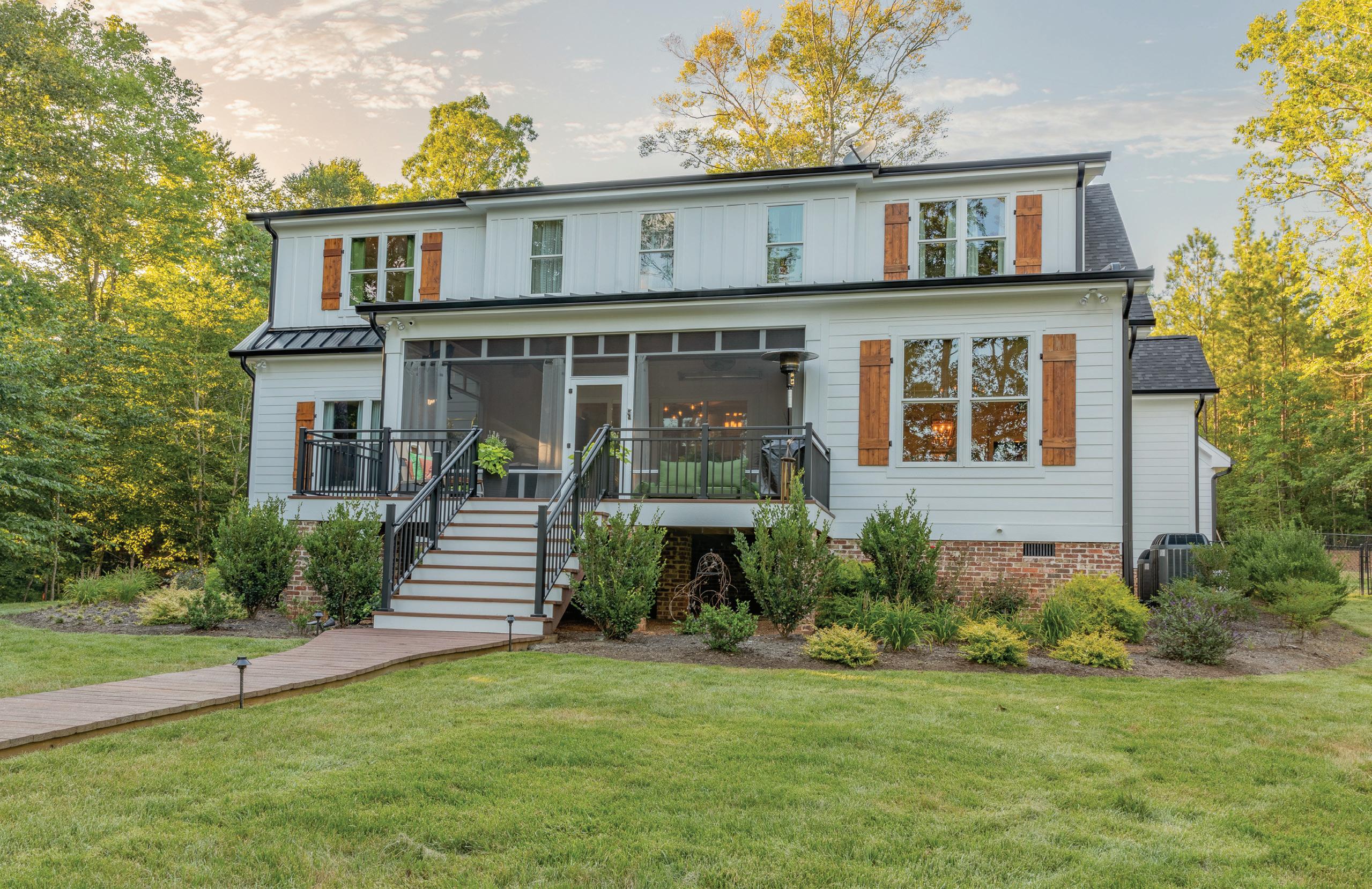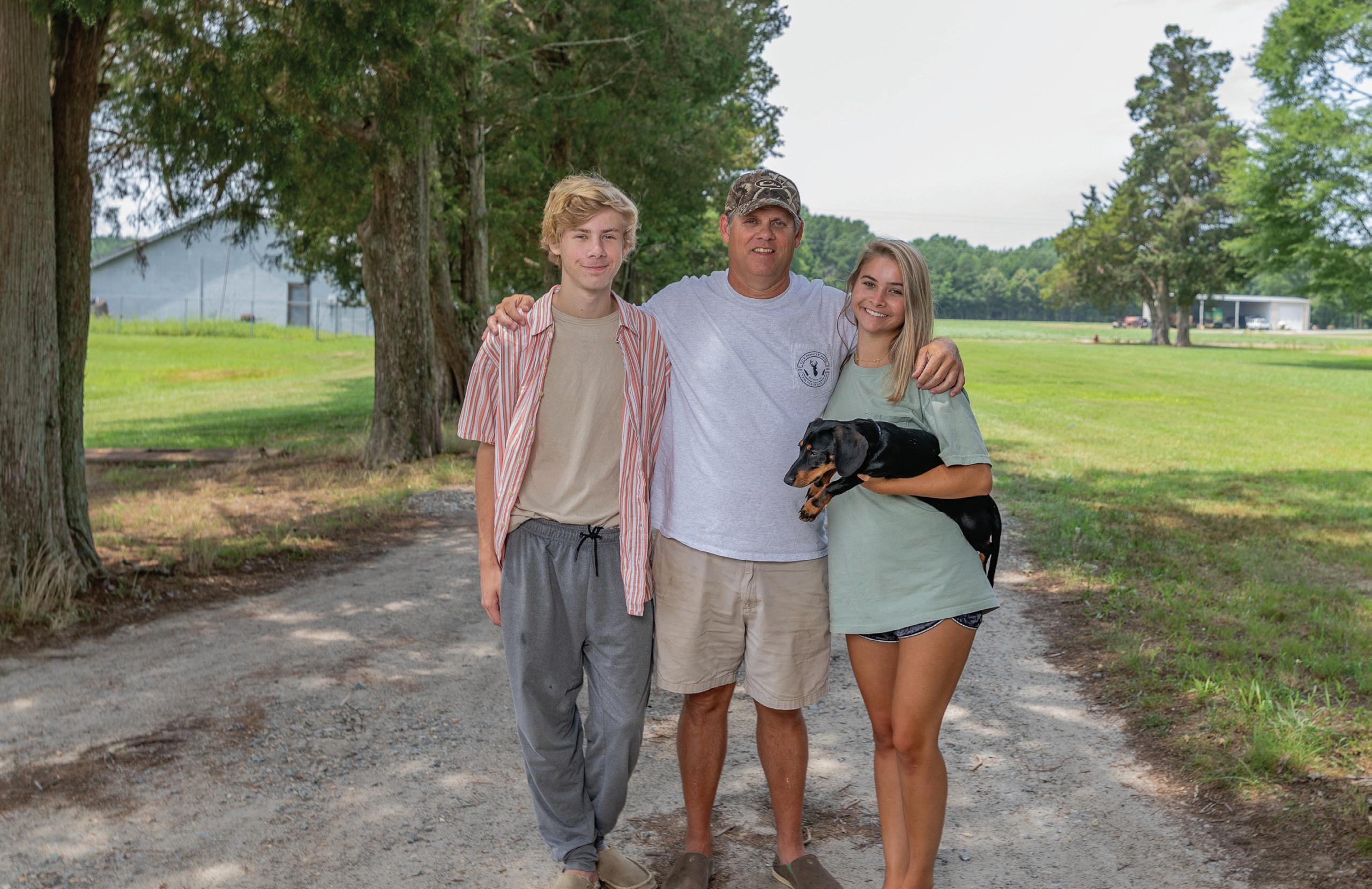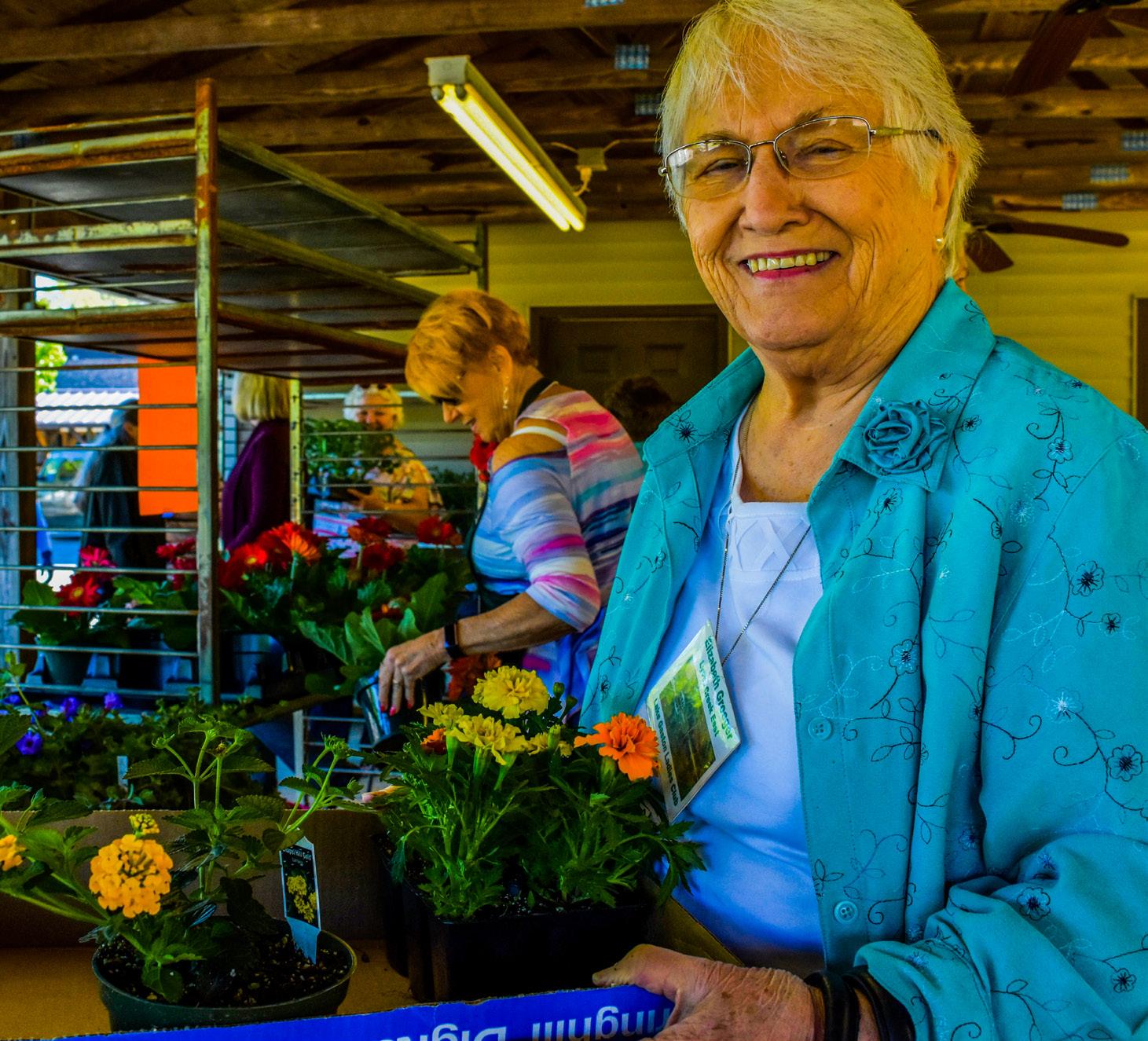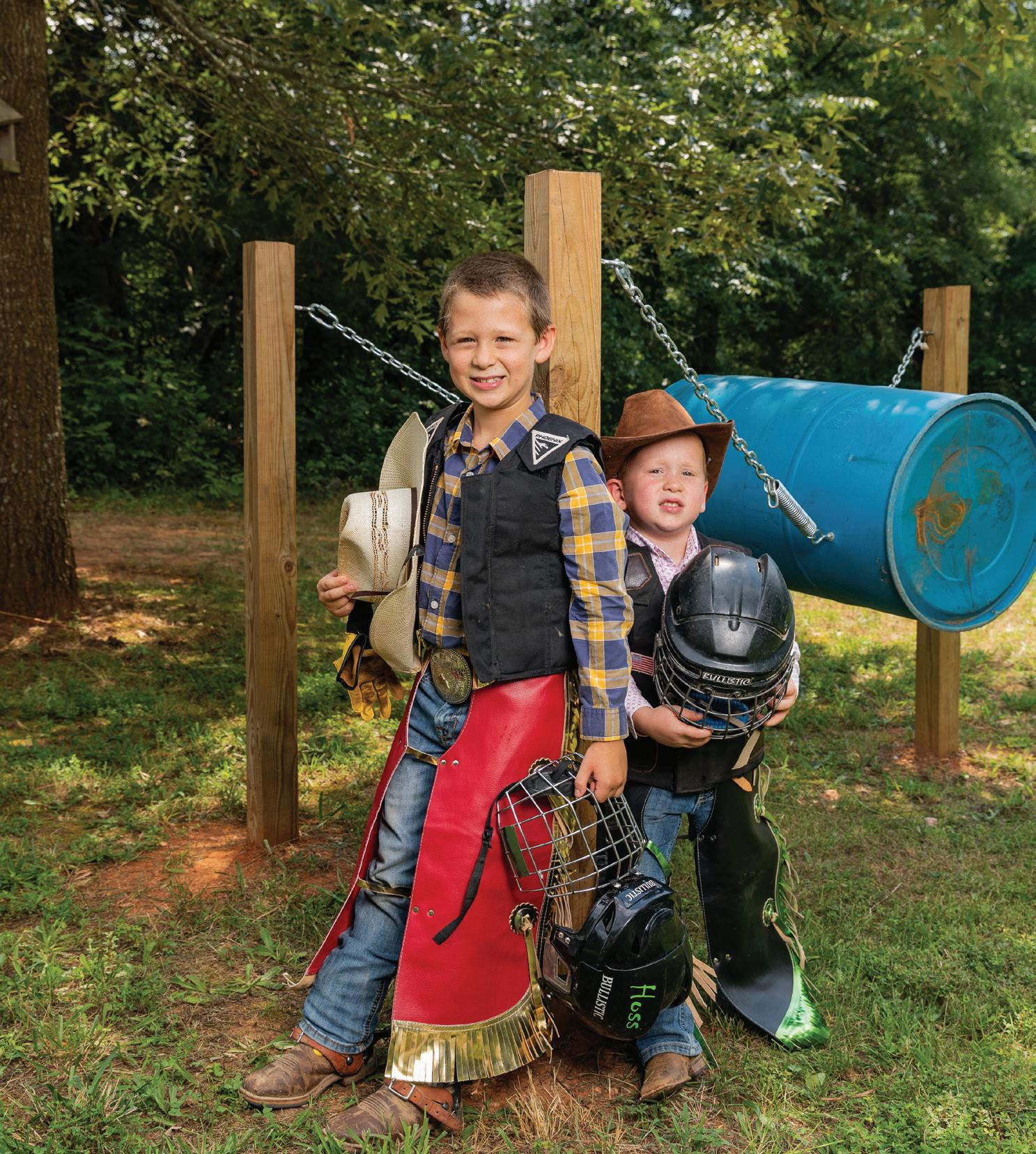
14 minute read
Building a Legacy
Mike Lubbock is what you might call an adventurer. In a time when most people didn’t know a lot about the world outside their neighborhoods and had never seen an elephant, much less a Flightless Grebe, Mike was growing up on a farm in post-WWII England. Today he operates Sylvan Heights Waterfowl Park in Scotland Neck, NC and is among the world’s most illustrious and adventurous aviary experts in history. Through the years, Mike, his wife Ali, son Brent and Brent's wife Katie have built the park and breeding center to house one of the greatest waterfowl collections in the world. Mike and his family have taken on the responsibility to educate people of all ages about endangered waterfowl. Growing up, Mike had an adventurous spirit and loved to take long walks with his mother where they would observe the native wildlife. He said that while there weren't many bird identification books around back then, he managed to obtain an old one and he loved to climb trees. Mike would often bring home the stray and abandoned birds from the farm, though most didn’t survive. When old enough, he attended Kestrels boarding school about fifty miles from the Lubbock's farm in Churchstanton. He said these early experiences taught him the importance of hard work and making one’s own way. He said at Kestrels, “I got away with a lot regarding pets. I had ferrets and rabbits, birds, eggs and lots of other things. The headmaster allowed me to keep an owl at school.” As his time at Kestrels came to a close, Mike thought sailing the high seas in the navy would give him the opportunity to study animals in other places. However, after two years in the service he wanted out and approached his father about a career in waterfowl research. His hero, Peter Scott, had a television series in which he traveled the world observing wild animals. Mike would later meet and work with Scott, studying and breeding endangered species. Mike’s father pulled a few strings at the Wildfowl & Wetlands Trust, most commonly referred to as the Wildfowl Trust, the largest international fowl and wetlands conservation charity in the UK. Mike noted that if there had been a Hawk Trust his life might have been different but as it was, waterfowl was where his adventures began. Being a young man in the 1960s had great advantages and Mike found himself appearing on the television show Discs A Go-Go, the UK's answer to American Bandstand. Mike was quite popular and met The Beatles, Eric Clapton, Jimi Hendrix and many other rock n roll trailblazers while working there. “It’s funny, you look back and realize these groups are so big now and yet they weren’t back then. I was more excited when we had singers from America, like Gene Pitney, Roy Orbison and Lorne Greene (from Bonanza),” Mike said. While on the show, he never lost focus on his responsibilities at the Trust. His hard work and popularity combined to move him forward in animal husbandry as he worked his way up to assistant curator. He then went on to work at Duck Puddle Pond on Oyster Bay in Long Island, New York, and worked hard to build one of the finest collections of waterfowl in the United States. His excursions to build that collection took him around the world and includes stories of being surrounded by crocodiles, being shot at, nearly run over by a madman on a boat, a tropical disease and a plane crash. In 1973 he returned to the Wildfowl Trust where he met Ali Stewart from Edgemere, Scotland. Ali had no real liking for the handsome but “cantankerous” curator. As time went on however, he noticed she had the same love and passion for waterfowl that he did. She also grew to appreciate Mike’s better qualities and accepted the assistant curator position. Love blossomed and the two were married a few years later. A few years after that their son Brent was born. Dale True, Mike's biographer, describes their love, as such, “Ali would be that ‘one Opposite, clockwise from top in a million’ who was willing to invest all of her life and left: A Eurasian Owl looks on, an African White-backed Duck relaxes in one of the many water effort into the the dream features, a group of Flamingos Mike Lubbock chased hang out and a Ruff Sandpiper around the world. Ali not cools off. only provided support to the family, but also to Mike’s desire to be the world’s best aviculturist. Together they would strive to reach the pinnacle of waterfowl preservation, doing all in their power to save endangered species from extinction.” Today, the couple has put in exhaustive time and energy into building and maintaining Sylvan Heights Bird Park. When asked what she thought of that dream now, Ali replied, “This wasn’t the dream!” She gave a little laugh. “I didn’t know what the dream was.” She thought a moment about the park, the breeding center and how far the family has come in their conservation efforts. Perhaps this wasn’t the way she and Mike envisioned it in those early days but she seemed happy with how far they have come and how things are progressing now. “This wasn’t the dream,” she remarked, then smiled again. Her voice softened as she said "But it has become one." Mike had dreams of his own. He did a second tour of the Wildfowl Trust in 1973, at which time he was entrusted as curator. He became quite chummy with Queen Elizabeth, who proceeded to tap him as an advisor on the royal waterfowl. “I was very nervous, as you can imagine,” he reported concerning his first visit. He said the Queen was quite pleasant, however and immediately made him feel “very much at ease.” From the vantage point at The Wildfowl Trust, Mike strengthened and expanded his connections in the aviary world, pioneering the use of portable incubators in his excursions. He worked with SeaWorld in San Diego, CA often on a variety of “avian husbandry tasks” including collecting a rare Pink Eared Duck from Australia and improving handling techniques for other breeds. In 1983, Mike finally solidified the desire to build his own waterfowl collection when he partnered with Doug Goode Jr. in Montgomery, AL. Mike moved his mother’s private collection in with Doug’s collection that included curassows, macaws and flamingos. This newfound independence gave him the freedom to manage the flock in ways that better attained his specific conservation goals. The problem was that sometimes saving wild waterfowl put Mike in harm's way. Mike wanted to be able to stay at the compound and focus on breeding birds. In 1984, Hank Marion, a regular customer in Montgomery that owned a substantial waterfowl collection of his own, noticed that Mike was struggling and made him an offer he couldn’t refuse. Proposing a partnership, Marion said it would afford Mike more of an opportunity to use his waterfowl breeding skills to save endangered species. Mike and Doug parted on amicable terms and divided the birds equally. He uprooted the family to move to Sylvia, N.C. and the original Sylvan Heights was born. With one of the goals being to breed and establish some of the rarest species in captivity according to Mike, he and Hank were surprised when the birds started breeding only a short time after arriving. “The 1985 breeding season ended up being better than we imagined the time,” Mike said.
Sylvan Heights was solid. Finances were as strong as the newly bred birds and a young Brent Lubbock was growing up and doing all he could to help. “I was lucky,” said Brent who is now very grown and a big part of the park , “I’d get to go on cool trips. There were lots of positives. From a child’s perspective this was always an interesting household,” adding that being the heir to his father’s legacy is a lot of hard work but it has also been lots of fun with memories he will never forget. For the next five years everything seemed to move forward without a hitch. No one could have anticipated that Hank would pass away suddenly in 1989. Hank’s portion of the farm was left to his son, who had no interest - in fact he wanted to develop the entire property and expected Mike to pay cash for the value of his father’s share of the collection. Mike countered with the offer to sell some of the birds and use the proceeds to pay for the remainder of the collection. Mike had to find the right property fast and that’s when the town of Scotland Neck, NC appeared on the radar.
Advertisement
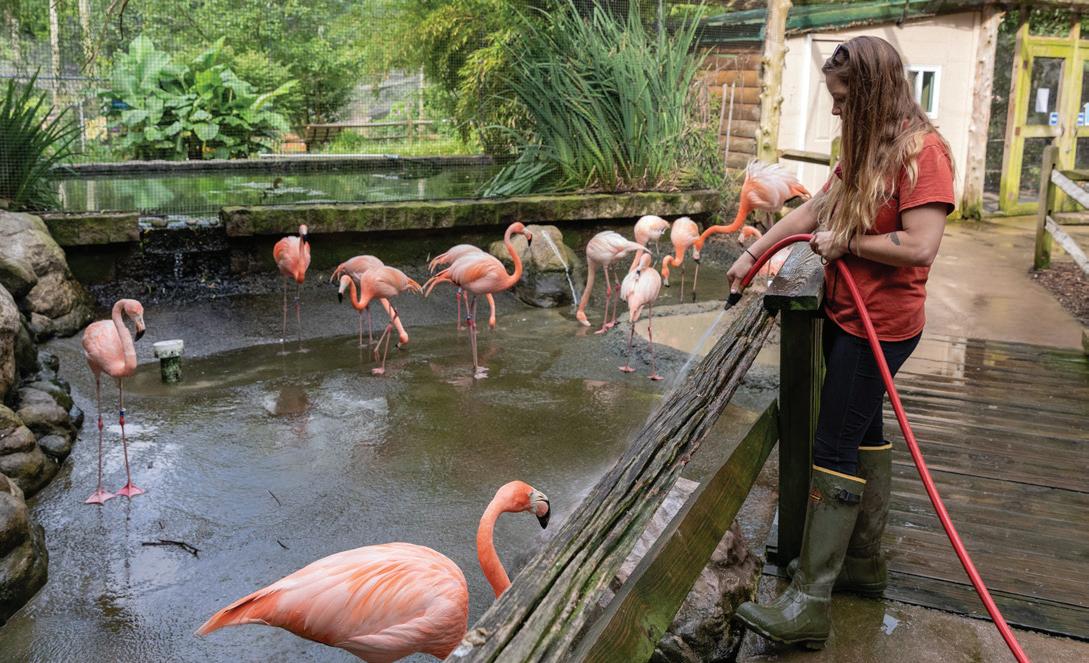
Toad and Hannah Herring frequently made trips to Sylvia to purchase birds for their collection and lived in Scotland Neck. They owned a lumber business and a property behind their home hadn't yet been cleared. Toad recognized Mike as more than a typical collector and offered to lease eight acres to the Lubbocks and help them relocate. It was a long 380 mile trip and there was a lot of work to be done. Mike was concerned that the birds would have trouble adapting to the warmer environment and so he sold the Arctic birds to raise the money to pay Hank’s son but kept all the rare and endangered species from Sylvia. The Herrings helped all that they could, clearing much of the property before Mike and Ali got there. Pens were built in a hurried fashion and the beginning of what is now “the largest and most biologically significant waterfowl collection in the world” was born. “We had to finish the breeding center, then move. The choice of Scotland Neck was a good one." He recalled the day he and Toad were looking around the property and trying to make a decision on the next move. He said there was no wind to speak of, no rain and yet a great oak tree crashed to the ground, startling them. 13 He said that while there were a lot of indicators that it was a good move, he took that as sign. He and the family were Scotland Neck bound. “It’s a farming community and we are farming birds. The climate is better than the mountains. It’s not too harsh.”Once everything was on track with breeding and building, Mike and Ali set out to build a world class facility. Over the years they've worked with other conservation groups to insure the survival of breeding programs for rare species and held prominent positions on association and boards, developing connections globally. By the late nineties, they had more than three thousand birds and more than 161 species. What the family lacked was financial resources as feeding that many birds twice a day was taking its toll. Help came from around the world in the form of interns eager to learn from Mike. He was the master of avian husbandry but on a local level, his work went unnoticed. By 1996, the Lubbocks were looking for a way to make the farm sustainable. Mike was concerned that his collection would have to be dismantled and sold. If that happened, it was doubtful that anyone, even Mike, could ever rebuild the collection again. With rare and endangered species on the line, it was likely that many would be lost forever. Having the right connections has its advantages, and members of the Bronx Zoo of New York City, as well as the President of the Association of Zoos and Aquariums, the Wildlife Conservation Society, numerous educational institutions and the U.S. Fish and Wildlife Service all agreed that losing such a valuable resource would be unacceptable. Sylvan Heights partnered with the North Carolina Zoological Society in 1997 and established the Sylvan Heights Waterfowl Society, a 501(C)(3) nonprofit organization. For the first time, Sylvan Heights had a tax-deductible entity to attract donations for conservation through aviculture from all over the world and word spread about the important work the family was doing. Ali’s warmth, charm and winning smile made her the perfect Assistant Director and Membership Manager. Brent stepped into the Director of Operations and Development position. “Brent filled in so well because he had public relations training,” said Mike, who admitted that he had always preferred being with animals to people. “I’m happy to find my niche,” Brent remarked candidly. “I’ve loved
animals all my life. I’ve been involved with their general care and able to help with the future of some species.” He mentioned that working with rare breeds has some disadvantages since no one has ever heard of them and they generally aren’t the most beautiful birds. “Everybody knows what geese and swans are but they don’t get as much respect as more popular birds,” he said. “Through the exposure of a variety of waterfowl we hope to open eyes. It’s a challenge.” But a new blessing was coming in the form of a new family member. Katie Gipple visited Sylvan Heights in 2003 interning as a biology student from Oregon State University. “I returned twice as a student volunteer and after finishing my Bachelors in Wildlife Biology, I was given the opportunity to work as an aviculturist at the Avian Breeding Center. Over the next 8 years, I earned a second degree in media and graphic design, as I'd always been interested in photography and science communication and later transitioned into the Media & Communications Coordinator position.” After eight years of working together, Brent and Katie made their vows. From her position, Katie takes the lead in telling the story of Sylvan Heights. Her creative talents include photography, marketing, layout and she is quite the story teller. “The most challenging thing to do is find a way to let people know about this place,” Brent remarked then looked over at his lovely wife. “We are very lucky to have Katie. Our location is amazing and she does an amazing job.” Katie said that her primary objective is to promote Sylvan Heights and that she’s grateful for the opportunity to promote and expand conservation efforts while doing that. “Education is a huge thing here at the park,” said Katie. She uses every opportunity to let people know about how the venue is growing, whether it’s creating beautiful documents, speaking on radio shows, building advertising campaigns or working with web sites and all this attention is making a difference. Sylvan Heights now hosts more than 55,000 people each year. The venue hosts eight main exhibits from around the world with new exhibits under construction and new species added regularly. With attractions like the Landing Zone and a beaver pond blind, those numbers will likely increase significantly. Toad Hall, a beautifully constructed pavilion, can be rented for special events like weddings, receptions and parties. “Toad Hall is doing very well,” Katie reported. “More students are coming for educational programs. There have been weddings and reunions. We’ve hired a part time event coordinator. If someone books an event during the day, they can include park admission and have access to the birds. They can have a unique setting.” Katie was excited about a brand new exhibit featuring birds from Australia and New Zealand that is opening this year. “A bird breeder in California for 30 years did a worldwide search with nine criteria in mind,” Katie said. “Sylvan Heights was the only facility that made the grade.” According to Katie, the breeder raised one million dollars to bring the birds over and build the proper sanctuary for them at Sylvan Heights.
In addition, there is a new breeding going in for Crowned Cranes. “They will have their own aviary,” she said and, to the delight of many, shared that they were also building a Penguin and white water bird exhibit. It will feature South African or Magellanic and little blue penguins,” she said. “The white water waterfowl will feature birds along the rough coastlines. There will be waterfalls and moving water, glass fronted pools so people can watch them dive and some behind the scenes encounters.” facility. Katie said this exhibit could take four to five years to build and require $100,000 in matching funds to make it happen but this is one of the biggest projects the organization has taken on thus far. Then there are plans for a native pollinator garden as well as an opportunity for visitors to learn the benefits of native gardens. She said it would be impossible for the Bird Park to continue to grow without its educational partners, the board and contributors. Through a partnership with East Carolina University, Katie said that Sylvan Heights is a field research site where interns from various departments can spend time at the facility and give students an opportunity to participate in non invasive research. “We want this to be a resource to students and for it to be a mutually beneficial collaboration,” she said. “There’s a lot of potential for that collaboration as we see each other’s needs and see what we can provide.” Katie and Brent said that the challenges they see ahead deal with conservation and education. Both hope that they will be able to impart the knowledge to the next generation that they need to understand the impact we all have on the environment.
Sylvan Heights is located at 500 Sylvan Heights Park Way, Scotland Neck, NC 27874. The park is open Tuesday through Sunday from 9 a.m. to 4 p.m. No reservations are needed unless you are bringing a large group. You can find ticket prices and purchase information at shwpark.com





